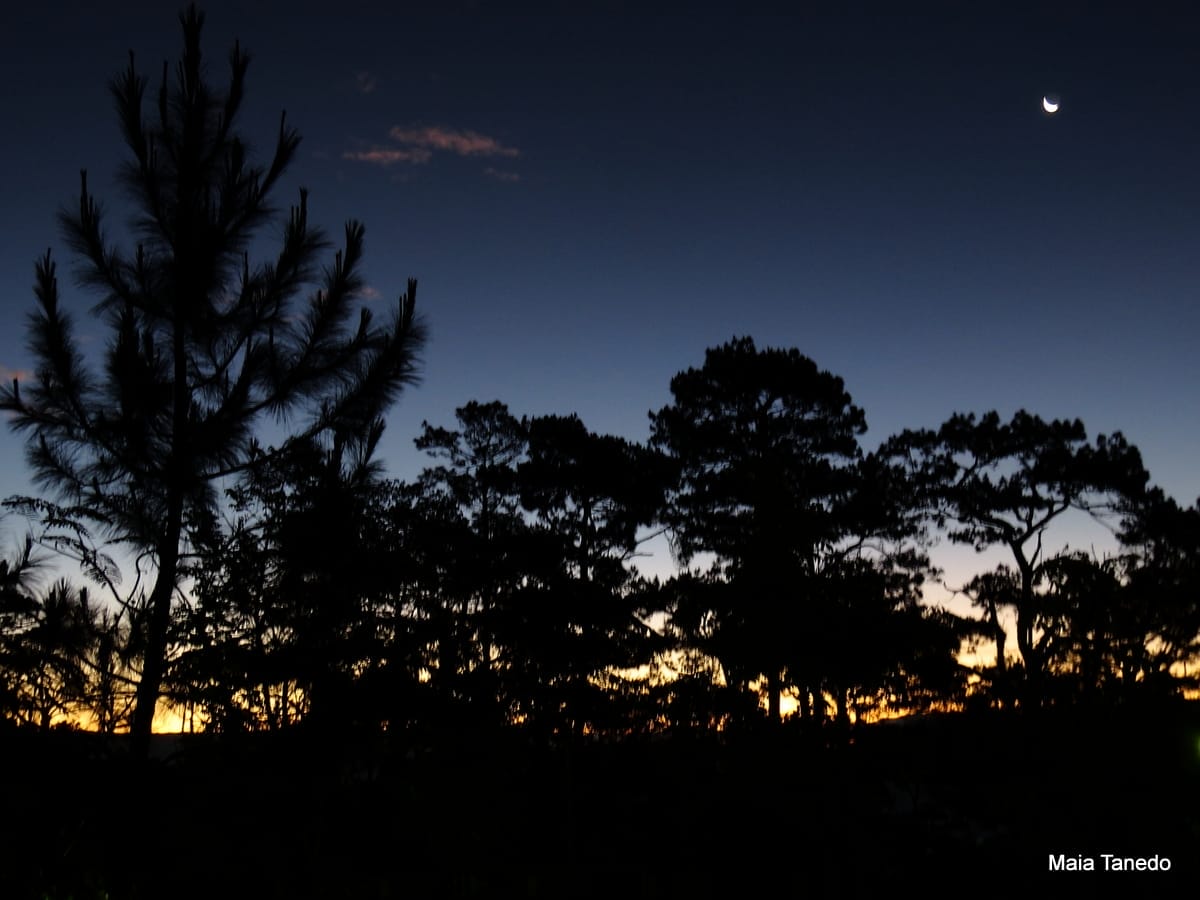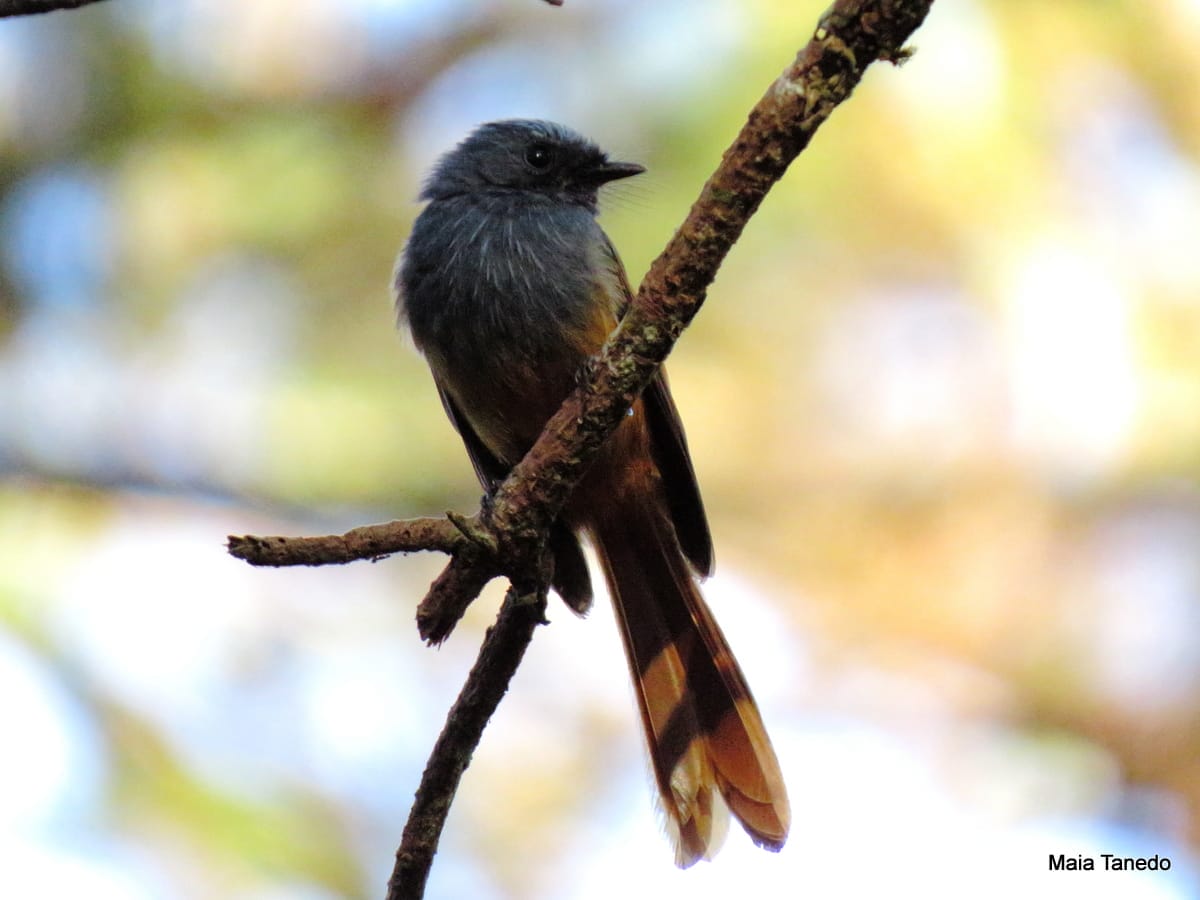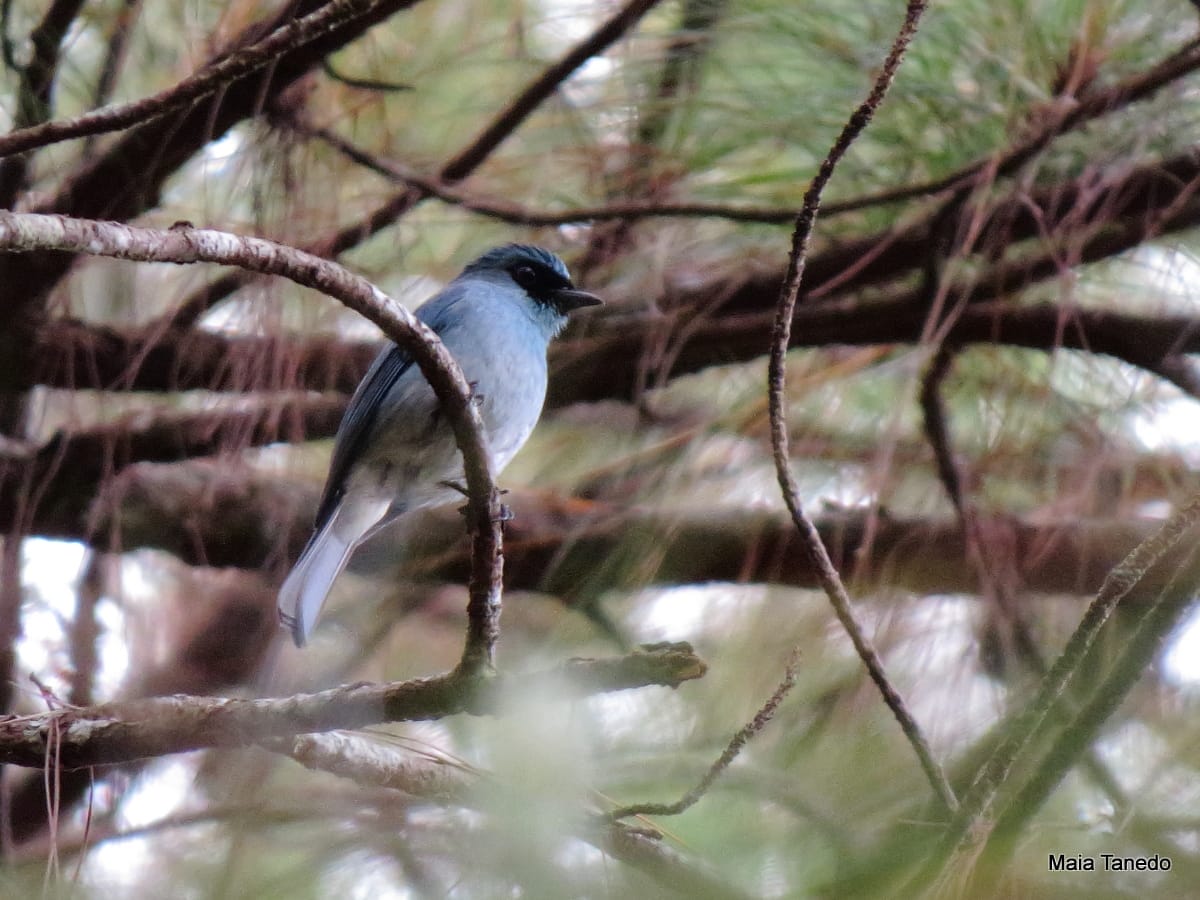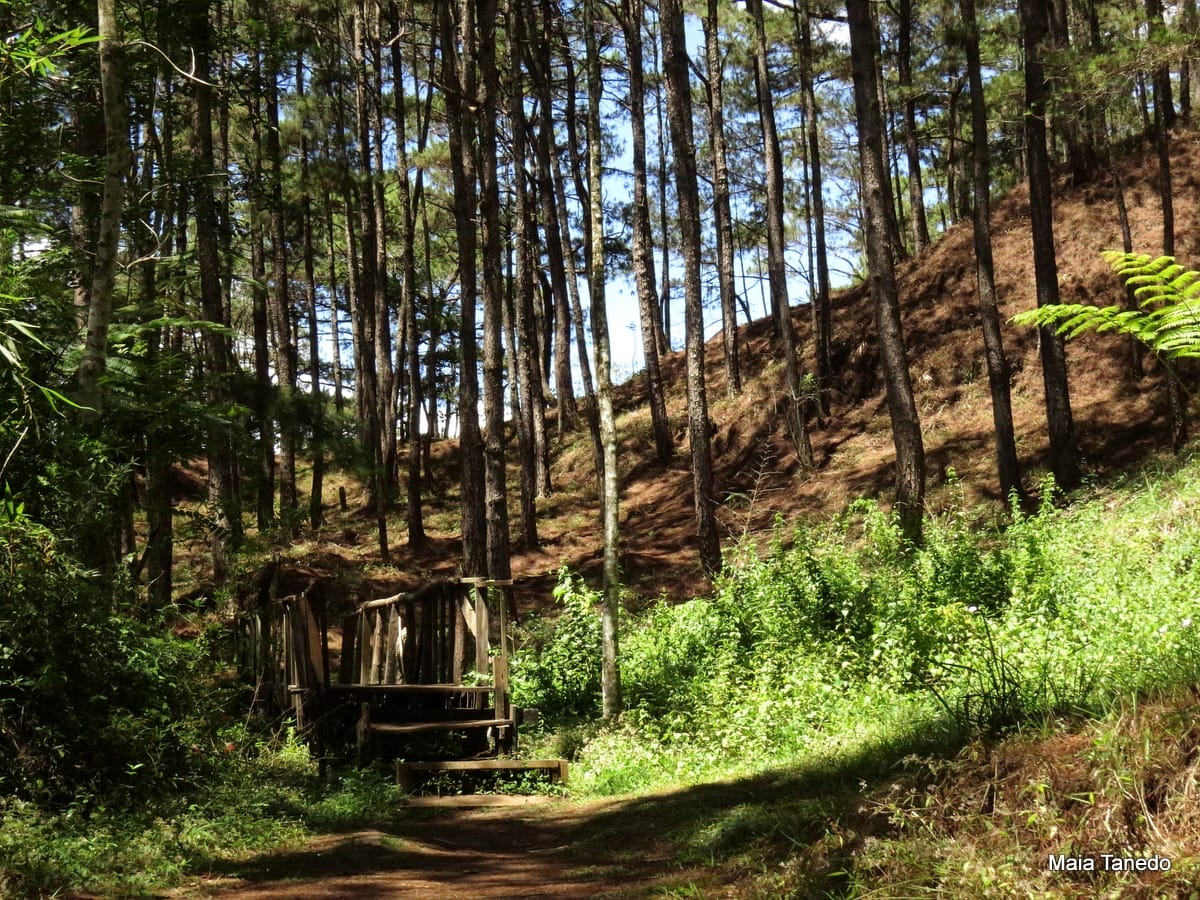by Maia Tañedo and Jops Josef
Many people go to Baguio for its cool mountain air, pine trees, and familiar tourist sites like Camp John Hay. Maia and Jops share another side of Baguio, its birdy side! Who would have thought that there are Siberian Rubythroats and Mugimaki Flycatchers right inside Camp John Hay? Not to mention the good looking regulars like the Turquoise Flycatcher, Blue-headed Fantail, Scale-feathered Malkoha, and more!
The Commute
It was Jops’s and my first time to go birdwatching in Baguio, specifically in the different sites inside Camp John Hay. We had scheduled the weekend so that we had ample time to bird and also to conduct a guided trip for Baguio locals on our last morning there.
We took the 12:15AM Victory Liner deluxe bus and arrived at their Baguio City station in just four hours! I slept through almost the whole ride and didn’t even get to check out the on-board comfort room. It was 750-pesos well-spent: it included a bottle of mineral water, a piece of bread, a stick of macapuno candy, plus power outlets for each seat, recliner seats, and even free wifi.
From the bus station in Baguio City, we took a taxi to The Forest Lodge, our hotel for the weekend which was inside Camp John Hay. We didn’t have a car to go around, so being booked inside the Camp allowed us to walk to the different birding sites we wanted to go to over the weekend.

A Brief History
In 1903, Camp John Hay used to be a military reserve for American soldiers who wanted some rest and recreation. Its cool climate served as an escape from the heat of Manila and other lowland areas which the Americans were not accustomed to. A total of 525 acres were allotted to the Camp for these purposes.
During the Japanese occupation, Camp John Hay fell under the command of General Tomoyuki Yamashita. After the war, General Yamashita surrendered and Camp John Hay was back under American control. In 1991, Camp John Hay was turned over officially to the Philippine government and was finally opened to the general public. Now it is one of the popular tourist attractions in Baguio City.
Day 1: A Very Birdy Morning at the Eco Trail
After a very early check-in, Jops and I started walking around the hotel just as the sun was rising. Our first birding spot was the Eco Trail. Just outside the hotel, Large-billed Crows and Crested Mynas were up very early. Elegant Tits and Mountain White-eyes were also beginning to stir and started singing and fly around in the trees.

We reached the entrance to the trail, which is also where a zipline feature is situated. Just across was the Le Monet Hotel where we decided to have breakfast (and all our breakfasts during our stay!)
We entered the trail and almost immediately saw a Blue-headed Fantail perched close to the path! There were also more Elegant Tits and Mountain White-eyes flitting among the high branches.

We walked further into the trail and crossed a small wooden bridge. As the day got hotter, the birds grew more active. Here we saw a number of Citrine Canary Flycatchers singing on bare branches high above us. The Sulfur-billed Nuthatches were also starting to arrive in our area when we saw a very unexpected bird to show: a Siberian Rubythroat!

As we were waiting for the handsome Rubythroat to come out to a more open perch, the Nuthatches started “descending” on us, creeping down the tree trunks. Distracted by the creepers, we turned our attention on them, losing the Rubythroat in the process…

Along with the Nuthatches came our first lifer for the trip: Olive-backed Pipits! They would fly in and perch on branches and would proceed to walk the length of the branch. They looked to me like versions of Pechora Pipits who preferred tree tops rather than the ground.

Challenging to photograph as they kept walking around!
There were lots of them crawling around the tree tops, picking food as they went along. When the wave of birds finally moved on, we tried spotting the Rubythroat but it was gone. We did see another unexpected lifer just a few meters from where we saw the Rubythroat: three Mugimaki Flycatchers! The birds were flitting around in the brush but they soon flew off, leaving me with just one good shot.

I feel very lucky to have seen this one =)
We pushed forward and saw more Elegant Tits, Mountain White-eyes, and Sulfur-billed Nuthatches. A number of Large-billed Crows called noisily as they flew through the trees. We stopped after the second wooden bridge and ended our birding in the Eco Trail. It was a very easy trail, not to mention short! But it is a wonderfully birdy place, especially in the morning!

In the afternoon, we planned to bird in the Tree Top Adventure. It wasn’t as birdy as our morning, but the friendly staff shared their own bird sightings with us.
Day 2: Exploring the Yellow Trail
For our second day, we decided to hit the Yellow Trail, still inside Camp John Hay. The entrance we took was through the Tree Top Adventure. The Yellow Trail, if you complete it, is quite a long walk. Well, at least longer than the Eco Trail. We walked the entire trail for the whole morning!

It wasn’t as birdy as the Eco Trail… BUT I did get to see one of my most awaited lifers: Turquoise Flycatcher! We saw a lot of the usual suspects in the Yellow Trail and met some hikers and bikers along the way. We exited the trail to the calls of a White-throated Kingfisher and found ourselves in the horseback riding area.

Day 3: Guided Trip in the Eco Trail
Our last morning in Baguio was dedicated to a WBCP guided birdwatching trip. We had 8 participants who were very very lucky that morning! The first bird they saw was an Oriental/Himalayan Cuckoo! The bird seemed to follow our group for the rest of the morning.

At the start of the trail, we were already treated to good, close-up views of Sulfur-billed Nuthatches, Elegant Tits, and Mountain White-eyes. Further down the trail, we head a distinct call: Scale-feathered Malkoha! Everyone was amazed at seeing this bird as it skulked around low trees. Such an awesome lifer for them! The group had seen almost all there was to see in an hour’s time!

The Eco Trail is such a great place to conduct a guided trip for beginning birders. The trail is very easy and there are definitely a lot of birds to see. Imagine having Citrine Canary Flycatchers, Elegant Tits, and Sulphur-billed Nuthatches as your first lifers!

To Sum It Up
We spent two and a half days inside Camp John Hay. We didn’t have a car to go to the trails and walked instead, so being booked inside the Camp was a plus. We birded both the Eco Trail and the Yellow Trail inside Camp John Hay. The Eco Trail is a short trail with very minimal inclines. The trees are quite tall here but the birds do come down for better views and photographs as well. In our experience, it was much more alive with bird activity in the morning.
The Yellow Trail is quite a walk and the trail goes quite high. In some portions, you are walking alongside a considerable drop and are at eye level with the tree tops. This can make birds both easier and more difficult to see, depending on where they are. The Yellow Trail is also popular with hikers and some bikers too.
All in all, it was a great weekend up in the Camp. I was able to tick off four lifers (three for Jops) during our weekend stay, and quite literally didn’t even break a sweat!

BIRDLIST:
- White-breasted Waterhen Amaurornis phoenicurus – heard only
- Philippine Hanging Parrot/Colasisi Loriculus philippensis
- Scale-feathered Malkoha Dasylophus cumingi
- Himalayan/Oriental Cuckoo sp. Cuculus sp.
- White-throated Kingfisher Halcyon smyrnensis
- Philippine Pygmy Woodpecker Dendrocopos maculatus
- Long-tailed Shrike Lanius schach
- Blue-headed Fantail Rhipidura cyaniceps
- Large-billed Crow Corvus macrorhynchos
- Citrine Canary-flycatcher Culicicapa helianthea
- Elegant Tit Periparus elegans
- Tawny Grassbird Megalurus timoriensis
- Chestnut-faced Babbler Zosterornis whiteheadi
- Mountain White-eye Zosterops montanus
- Sulphur-billed Nuthatch Sitta oenochlamys
- Crested Myna Acridotheres cristatellus
- Grey-streaked Flycatcher Muscicapa griseisticta
- Mugimaki Flycatcher Ficedula mugimaki
- Turquoise Flycatcher Eumyias panayensis
- Eurasian Tree Sparrow Passer montanus
- Grey Wagtail Motacilla cinerea
- Olive-backed Pipit Anthus hodgsoni

Pingback:February 2015 | e-BON
At the Tree Top Adventure if you took the left fork off the Yellow Trail, you’d find a tall steel view deck which you can climb up and bird from. Maithri Jansz and I climbed it and saw the Turquoise Flycatcher there as well as a pair of Bushchats, Elegant Tits and Sulphur-billed Nuthatch. For us, it was birdier than the longer right fork leading to the horse rentals and Le Monet.